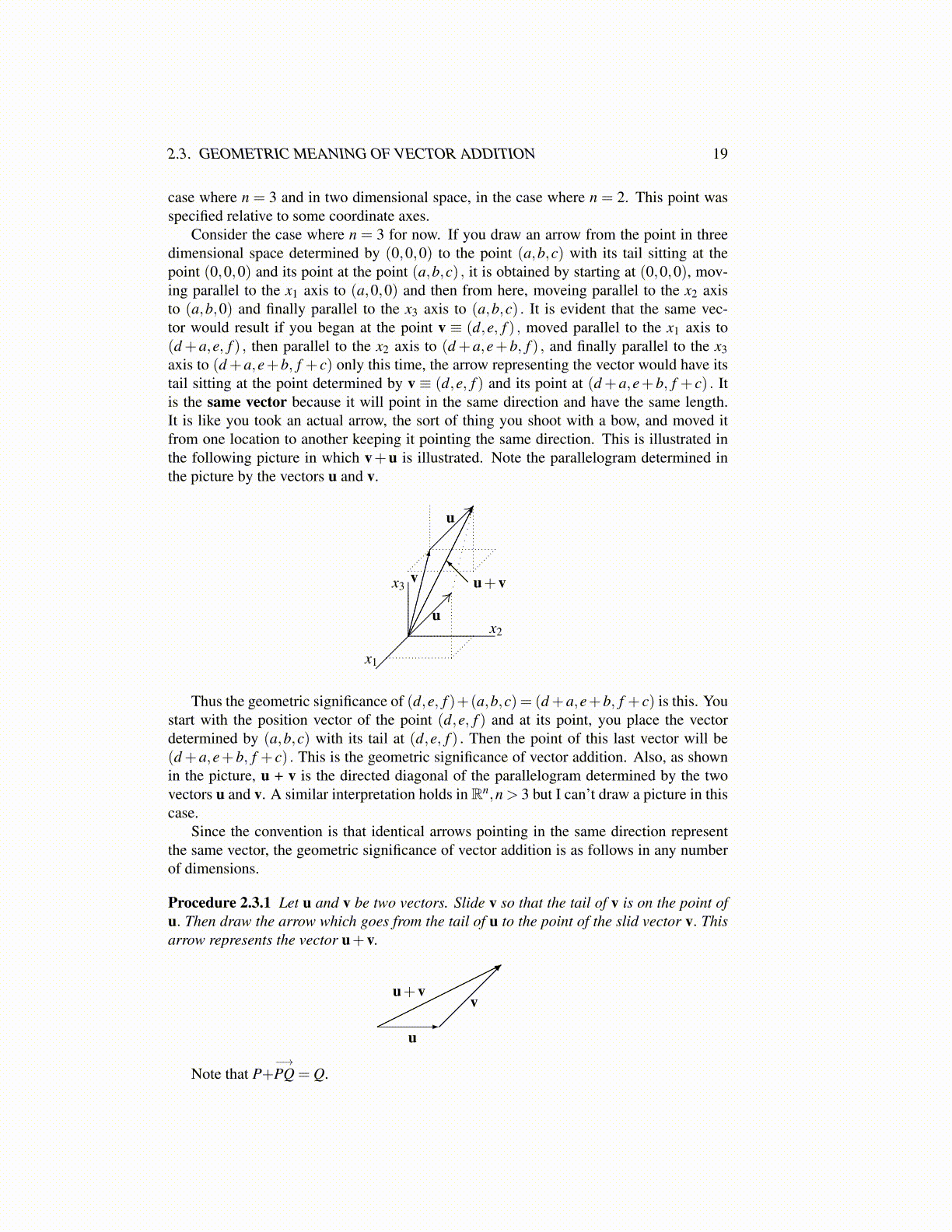
2.3. GEOMETRIC MEANING OF VECTOR ADDITION 19
case where n = 3 and in two dimensional space, in the case where n = 2. This point wasspecified relative to some coordinate axes.
Consider the case where n = 3 for now. If you draw an arrow from the point in threedimensional space determined by (0,0,0) to the point (a,b,c) with its tail sitting at thepoint (0,0,0) and its point at the point (a,b,c) , it is obtained by starting at (0,0,0), mov-ing parallel to the x1 axis to (a,0,0) and then from here, moveing parallel to the x2 axisto (a,b,0) and finally parallel to the x3 axis to (a,b,c) . It is evident that the same vec-tor would result if you began at the point v ≡ (d,e, f ) , moved parallel to the x1 axis to(d +a,e, f ) , then parallel to the x2 axis to (d +a,e+b, f ) , and finally parallel to the x3axis to (d +a,e+b, f + c) only this time, the arrow representing the vector would have itstail sitting at the point determined by v ≡ (d,e, f ) and its point at (d +a,e+b, f + c) . Itis the same vector because it will point in the same direction and have the same length.It is like you took an actual arrow, the sort of thing you shoot with a bow, and moved itfrom one location to another keeping it pointing the same direction. This is illustrated inthe following picture in which v+u is illustrated. Note the parallelogram determined inthe picture by the vectors u and v.
u
v u+v
u
x1
x3
x2
Thus the geometric significance of (d,e, f )+(a,b,c) = (d +a,e+b, f + c) is this. Youstart with the position vector of the point (d,e, f ) and at its point, you place the vectordetermined by (a,b,c) with its tail at (d,e, f ) . Then the point of this last vector will be(d +a,e+b, f + c) . This is the geometric significance of vector addition. Also, as shownin the picture, u + v is the directed diagonal of the parallelogram determined by the twovectors u and v. A similar interpretation holds in Rn,n > 3 but I can’t draw a picture in thiscase.
Since the convention is that identical arrows pointing in the same direction representthe same vector, the geometric significance of vector addition is as follows in any numberof dimensions.
Procedure 2.3.1 Let u and v be two vectors. Slide v so that the tail of v is on the point ofu. Then draw the arrow which goes from the tail of u to the point of the slid vector v. Thisarrow represents the vector u+v.
u
u+vv
Note that P+−→PQ = Q.